Sorry, I am a little late to the dance. I haven’t posted in a while, and this build will be my first model in several months. In my defense, we sold our house of 30 years and moved 2 hours north to a new house so we can be closer to our daughter, son-in-law, and new grandchild. I will spare you the details of what it was like to have a house built during the pandemic (14 months to build) and then move on short notice. We were supposed to have 60-days notice before the new house was ready, but we were notified the first week of December that the house would be ready two weeks later. Between 7 December and 27 December, we found a mover, packed, got the old house ready to sell, moved to our new house, and started unpacking. When I was in the military, I moved 12 times in 20 years, so you would think I would be used to it. Apparently moving when you are 30 years old is different than when you are over 70 years old.
So, it is finally time to get back to modeling. The Bomber Group Build fits right into a model I have wanted to do for a while, which is a B-17F which was used as a “ferret” in the Mediterranean in 1943. Here is some background:
Radar became an important tool for all the major combatants in the early part of the war. Everyone knew that the other side had radar, but the details about location, numbers, how it was used, and capabilities were still on the fuzzy side. In October of 1942, a B-17E was fitted with primitive radar detection equipment and sent to the Solomon Islands to gather electronic intelligence (ELINT) information on Japanese radars in the area. This aircraft became the first ferret aircraft and was designated Ferret I. “Ferret” is the generic name for aircraft with the ELINT mission. The success of this first intelligence gathering aircraft led to the creation of the 16th Reconnaissance Squadron, whose purpose was to gather electronic information about enemy radar. Initially made up of a handful of war-weary B-17Fs, these first ferrets were sent to the Mediterranean to gather information on German radars prior to the invasions of Sardinia, Corsica, Elba, and Italy. The Allies knew the Germans were using radar in these locations, but they didn’t know where the radars were located, how much area they were able to cover, what frequencies they used, their strength, or how they were used. At first, using only Ferret III, IV, and V, they would fly 10-15 miles off the coast of Italy at night at 12000 feet. These planes, flying alone and only partially armed, would fly all night gathering intelligence on the German radars.
The war-weary B-17Fs were specially converted for the ferret mission. Their bomb-bays were bolted shut and filled with the equipment used to gather the radar intelligence. The lower ball-turret was removed from some of the planes and a dome with electronic sensors was substituted. These early Ferrets also worked closely with the British to develop anti-radar techniques, including the use of chaff and using electronic means to jam the German radars. These efforts were so successful that Ferrets, as well as jamming aircraft, accompanied many of the bombing missions later in the war. The Ferret mission shifted to the Pacific after the German surrender, and B-24 Ferrets were airborne when the B-29s dropped the first atomic bomb. These missions were the start of the Elint/electronic countermeasure mission that became increasingly important in Korea and later in the Vietnam War. Today, you don’t fly in a combat zone without considering the capabilities of enemy radar and other sensing systems.
As a side note, these early B-17 Ferrets were so war-weary that the planes would sometimes simply disappear during a mission. These losses were always attributed to enemy action, but some of the crews felt that the planes simply quit flying and just fell out of the air. These planes were so weary that they were abandoned in-place when the squadron transferred back to the US.
If you would like some more information on ferrets and their mission, there are two good articles that are available:
-Flypast Magazine, March 2011 (focuses on ferrets in the Pacific)
-Aviation Historian, Issue 30 (focuses on ferrets in the Med)
-

-
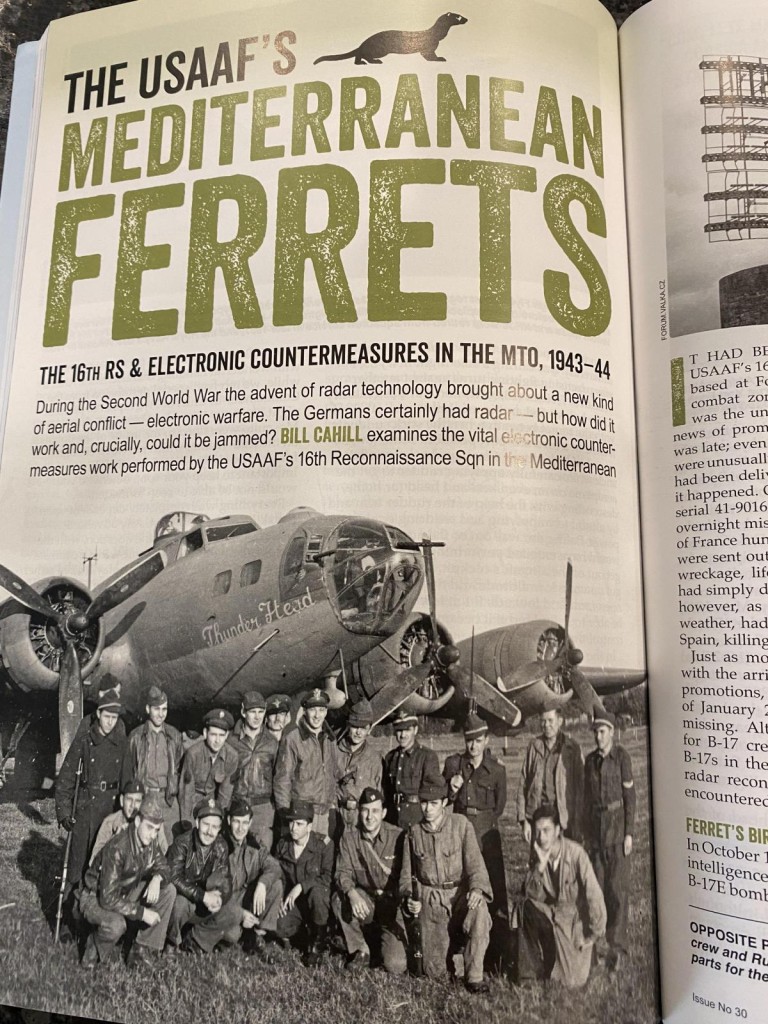
OK, enough history. On to the build. Two of the B-17Fs were known to have a black disruptive camouflage over their war-weary olive drab and gray. There are also reports of an all-black B-17F ferret, but I couldn’t find any photos. Ferret V had a very intricate camo made up of thin black stripes, while one of the later ferrets had broad black camo added. This build will focus on the latter plane, but I also want to do Ferret V later with its narrow stripes using a 1/48 model. Externally, there isn’t a lot of conversion to do. The planes had two extra antennas on top of the plane, and some also had the lower ball turret replaced with a radar dome. The top-secret mission of these planes makes info and photos a little scarce, but it looks like my plane had a radar dome added to the belly after it arrived. In addition, these planes apparently often flew with some of the gun positions unoccupied, so I plan to use machine guns only on the top turret and in the tail position.
-
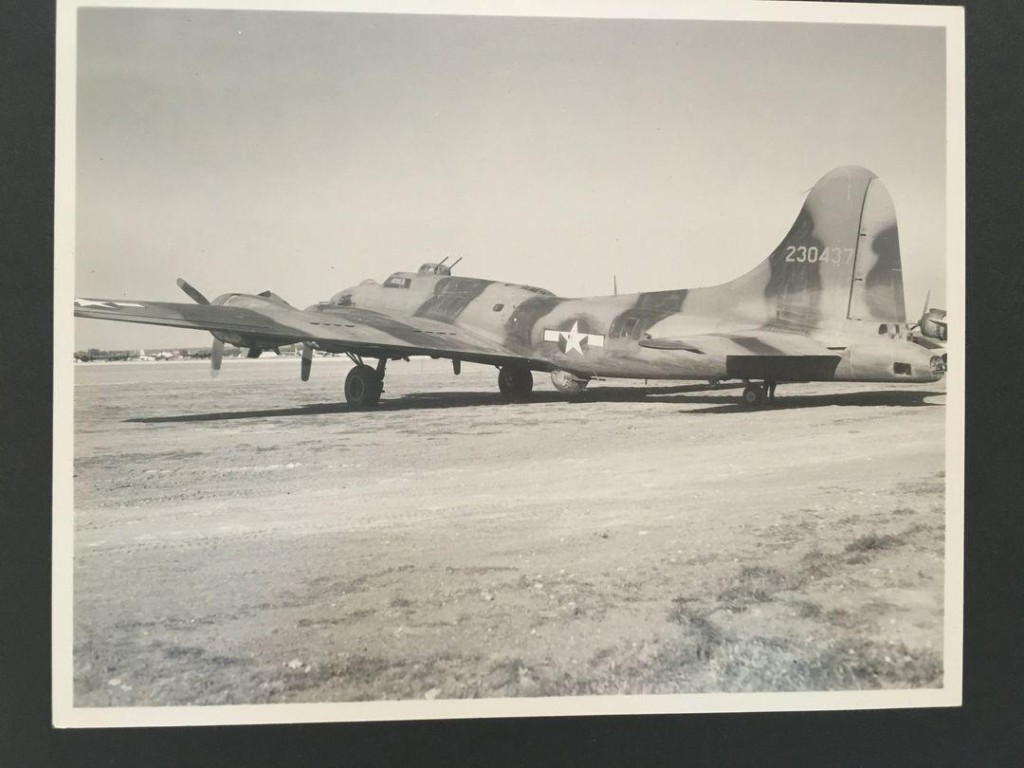
1. This is the plane I plan to model.
-
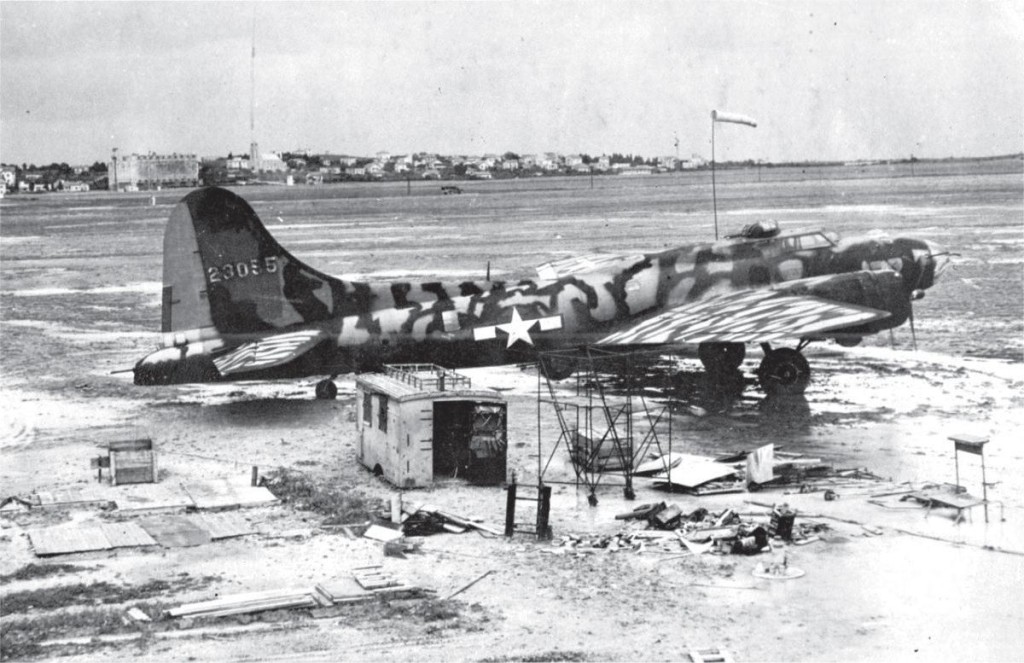
1. Narrow camo on Ferret V.
I plan to use the Academy 1/72 model of the B-17F as the basis for this model. I want to add some “enhancements” from Kits World, including a 3D instrument panel, seatbelts, and seat cushions. For the dome replacement, I had heard rumors that there was one in the more recent B-17G from Revell. I had this kit somewhere in a bunch of boxes, and it only took a month to find it. Good news, it had the dome. I have a selection of decals that I can use to create the markings for this plane.
-
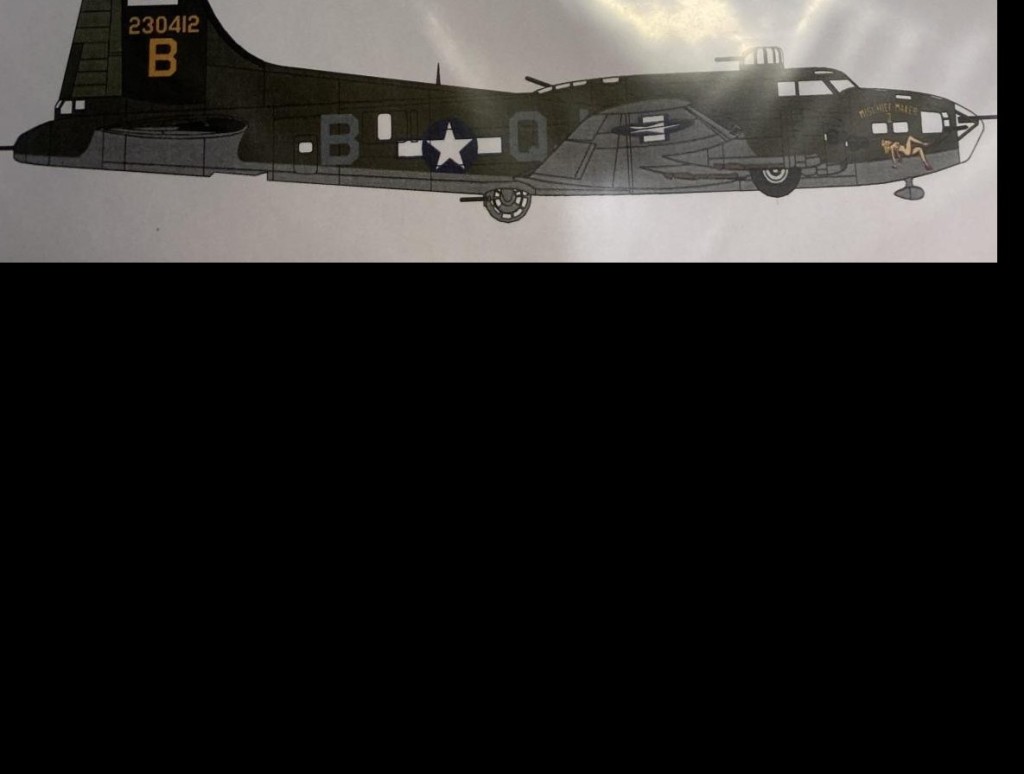
1. I won't need the risque nose art for this build.
-
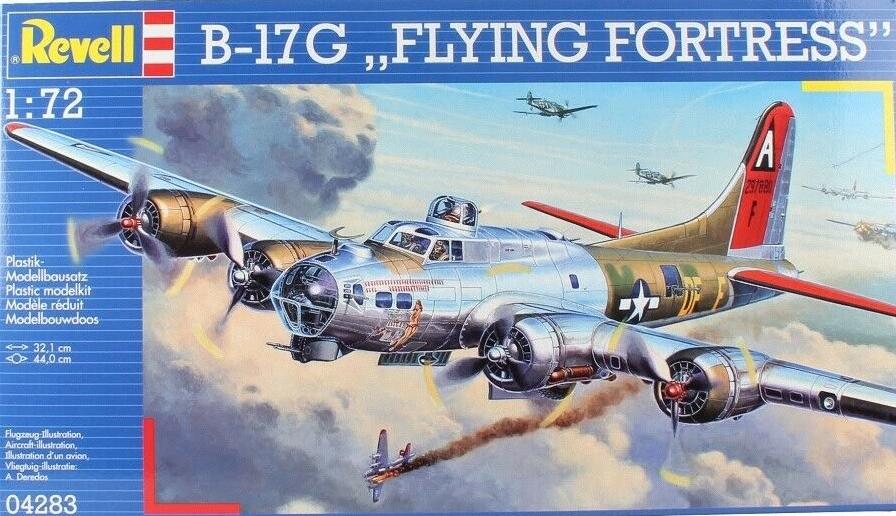
1. Donor kit for the needed dome.
-
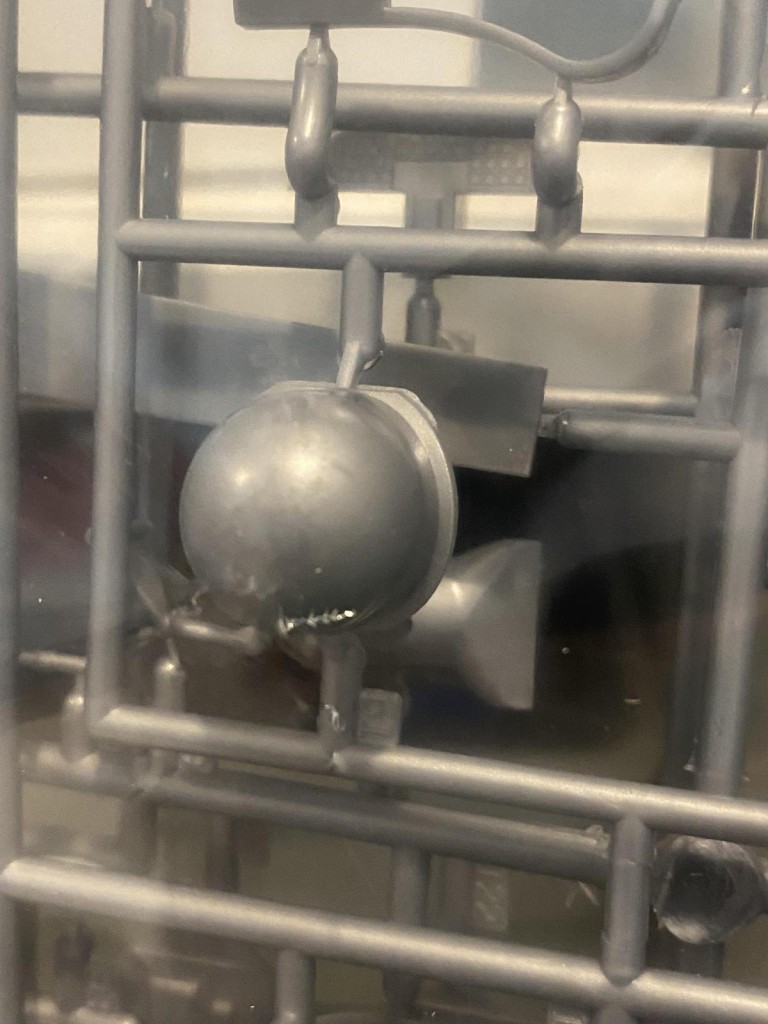
1. The needed dome for the belly.
I hope to start the build in the next few days. I haven’t built anything for several months, so hopefully the skills are like riding a bicycle and will come back quickly. Cheers.
-
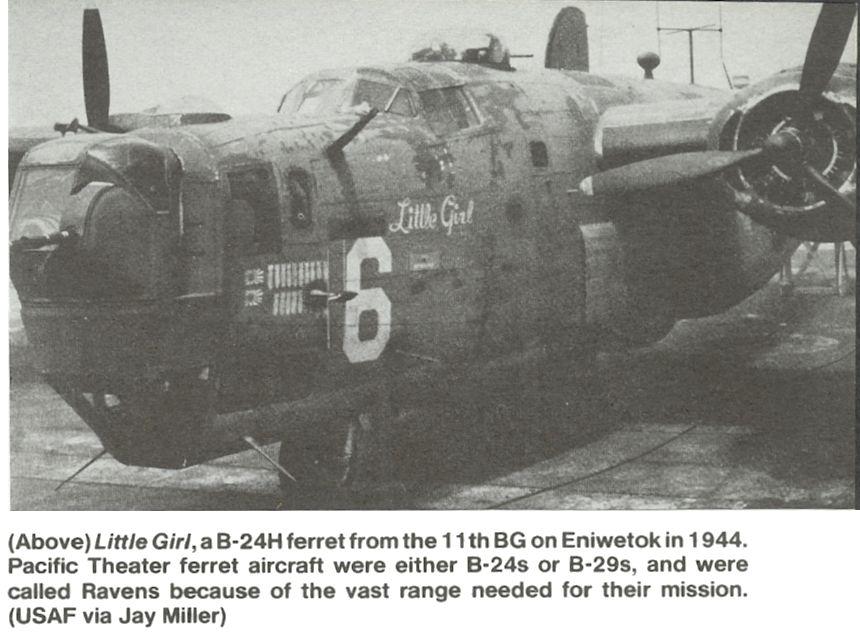
1. B-24s would be a good candidate for a ferret model, but they had a lot more antennas and domes.